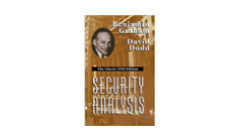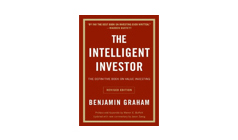Graham's Value books


Buying companies that are cheaply priced seems an intuitively straightforward path to investment success. History supports the argument. Taking the right 'value' approach is important.
| Authors | Summary |
|---|---|
| Benjamin Graham and David Dodd |
|
| Fama & French |
|
| Cochrane & Zhang |
|
| Hansen, Heaton & Li |
|
| Loughran & Wellman |
|
| Lakonishok, Shleifer & Vishny |
|
| Barberis & Huang |
|


Investing in Value: Combining successful value approaches and academic research
The observation that cheaply priced stocks outperform pricier stocks in the long term is the foundation of value investing. Since the time of Graham, value investing has been finessed and different value investors employ different ways to calculate value.
MSCI, one of the world’s largest index providers, analyses all of the companies in its universe and creates its Enhanced Value Indices. Compared to a traditional value approach, MSCI’s enhanced value indices overcome many of the criticisms of value, such as ‘value traps’, because it puts less weight on price-to-book as a metric and moves away from backward-looking dividend yield altogether. It uses a whole-firm valuation measure in enterprise value which could reduce concentration in leveraged companies.
MSCI’s Enhanced Value is based on the basis of three key Value factors:
Identifiable metric:
Ratio of the price to the company’s book value or what is on the balance sheet. The lower the price to book, the cheaper the company
Identifiable metric:
A version of the ratio of price-to-earnings (P/E) that uses forecasted earnings for the P/E calculation. The forward earnings are the weighted average of the consensus of analysts’ predicted earnings. The lower the Forward P/E the cheaper the company.
Identifiable metric:
The ratio of the entire economic value of a company to the cash it produces. When you divide EV by CFO, you're essentially calculating the number of years it would take to buy the entire business if you were able to use all the company's operating cash flow to buy all the outstanding stock and pay off all the outstanding debt. The lower the ratio faster a company can pay back the cost of its acquisition or generate cash to reinvest in its business.
Accessing MSCI's Enhanced Value approach
![]()
Diversified across countries, sectors and companies
Offering investors a portfolio of approximately 250 companies across a range of geographies, sectors and economies
![]()
Long term focus, capturing Value across the market cycle
VLUE tracks a MSCI Index that aims to address the pitfalls of Value investing, among them “value traps” – stocks that appear cheap but which in fact do not appreciate. The index is designed to capture a high level of exposure to Value while minimising unintended and unwanted sector bets.
![]()
International companies exhibiting value characteristics
Access a portfolio of international companies that are selected for their high Value score relative to sector peers as measured by: (i) price to book value; (ii) price to forward earnings; and (iii) enterprise value to cash flow from operations.
Morningstar’s forward-looking valuation approach allows long-term investors to look beyond a company’s current price and potential noise in the market. Each company is assigned a current fair value based on projected future cash flows, which is assessed against its current price.
For more information on Morningstar’s value approach visit the dedicated Moat investing page
Accessing Morningstar’s valuation methodology to identify Wide Moat companies trading at an attractive price/fair value ratio.
Key risks: Investments in ETFs carry risks associated with financial markets generally, individual company management, industry sectors, fund operations and tracking an index. See the PDS and TMD for more details on risks and whether these products are appropriate for you. Investment returns and capital are not guaranteed.